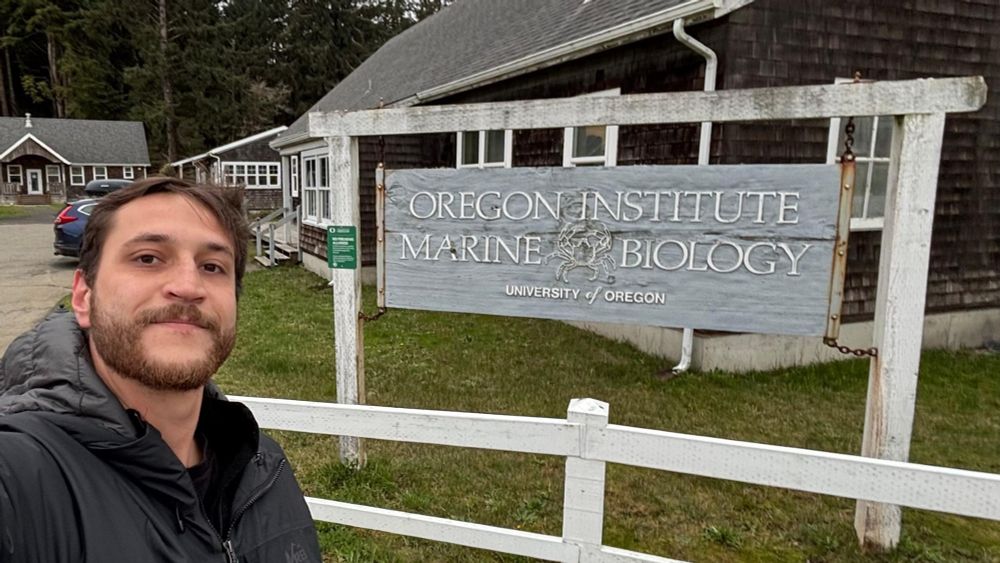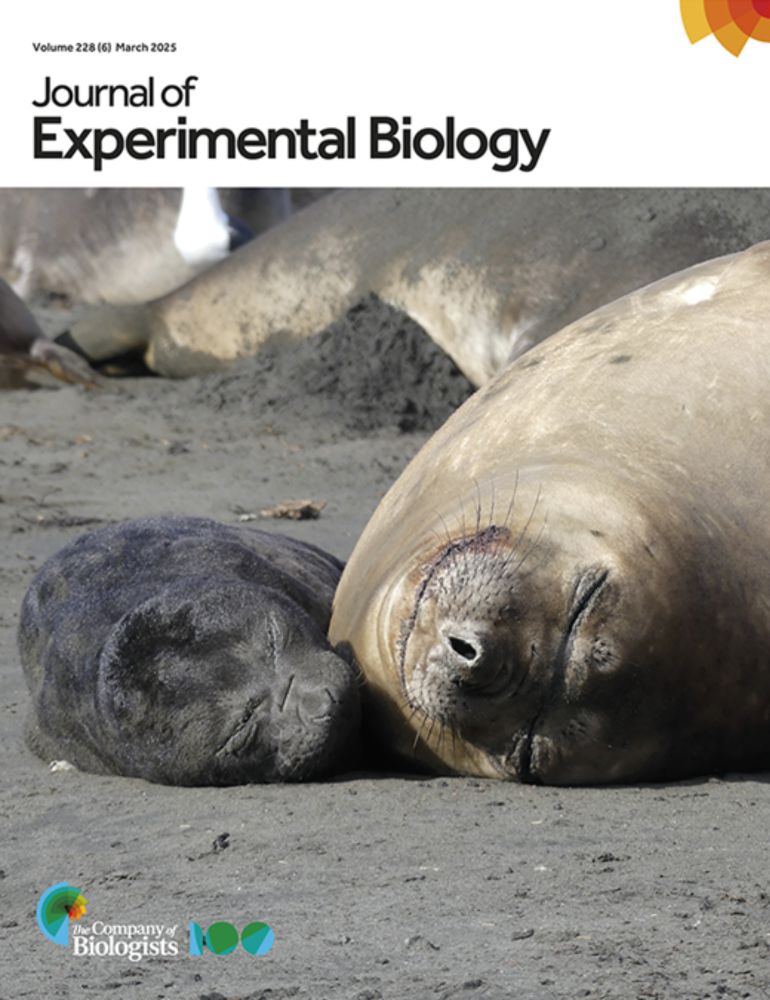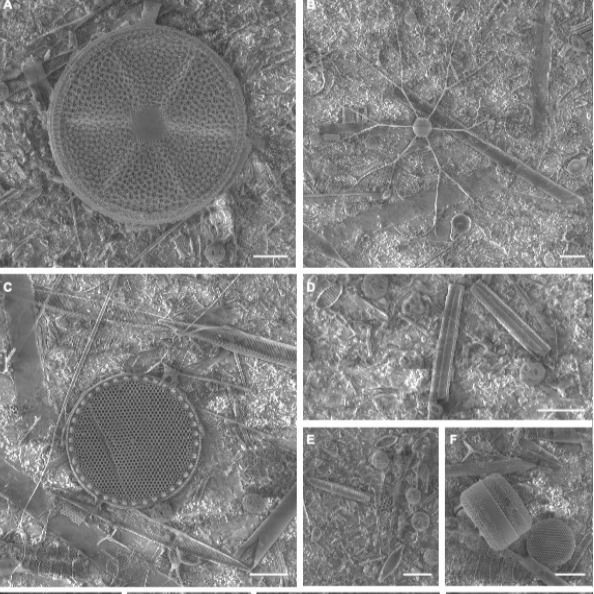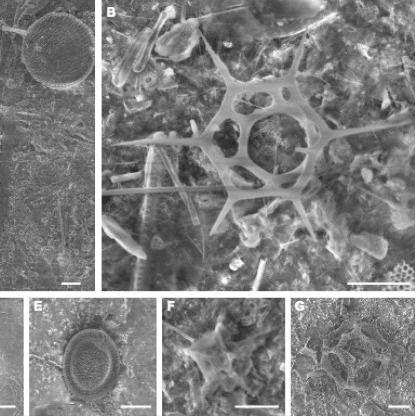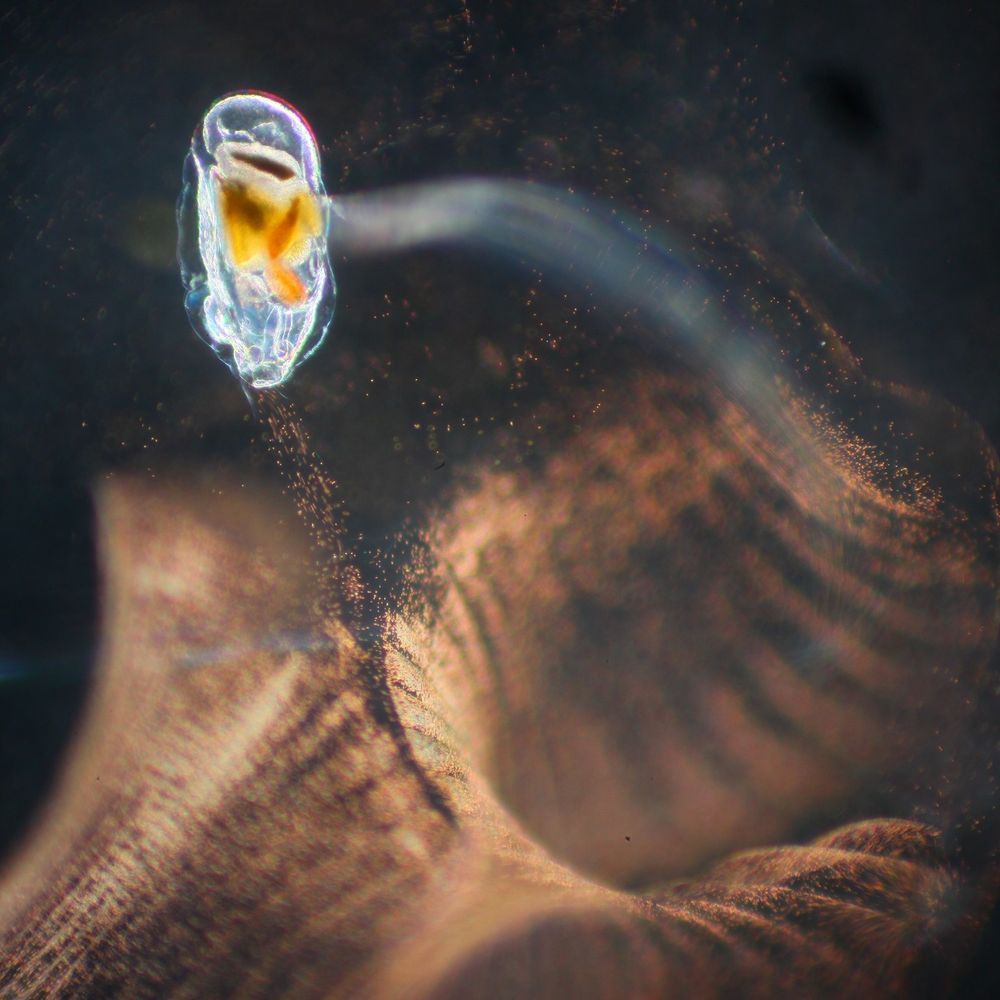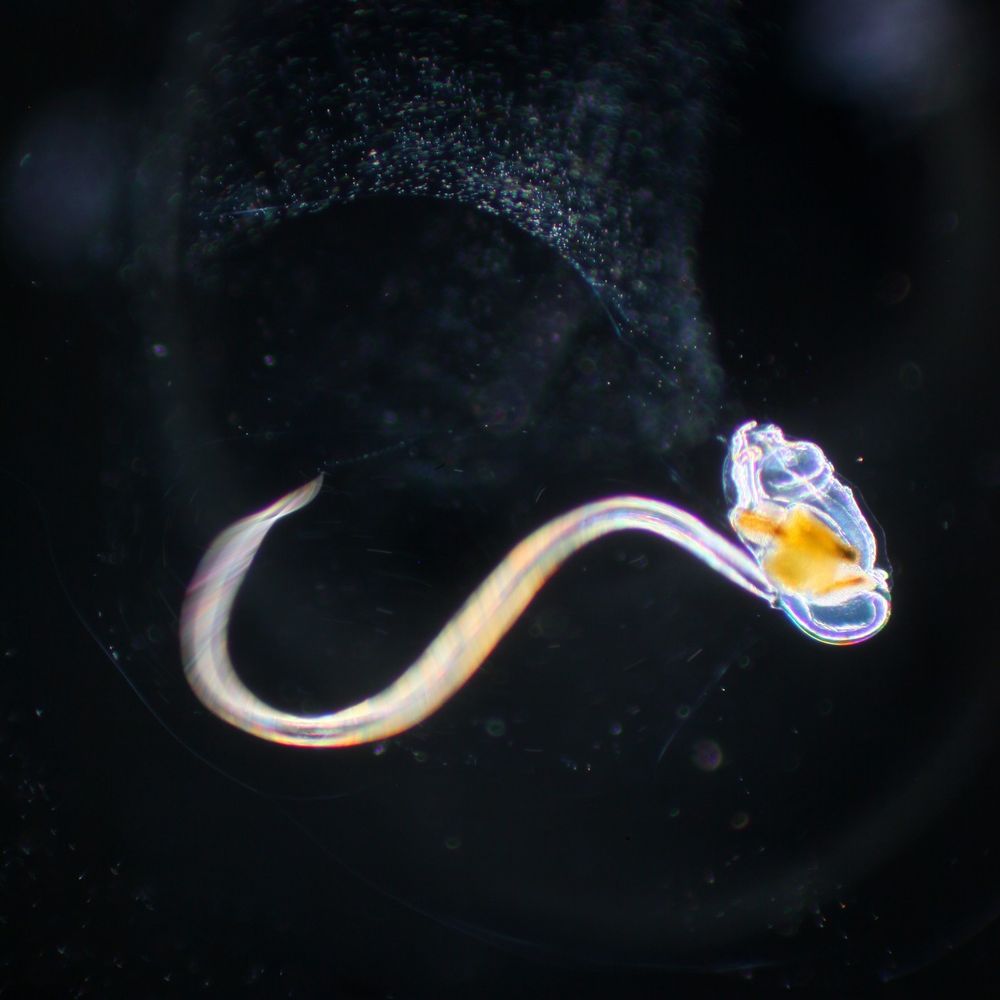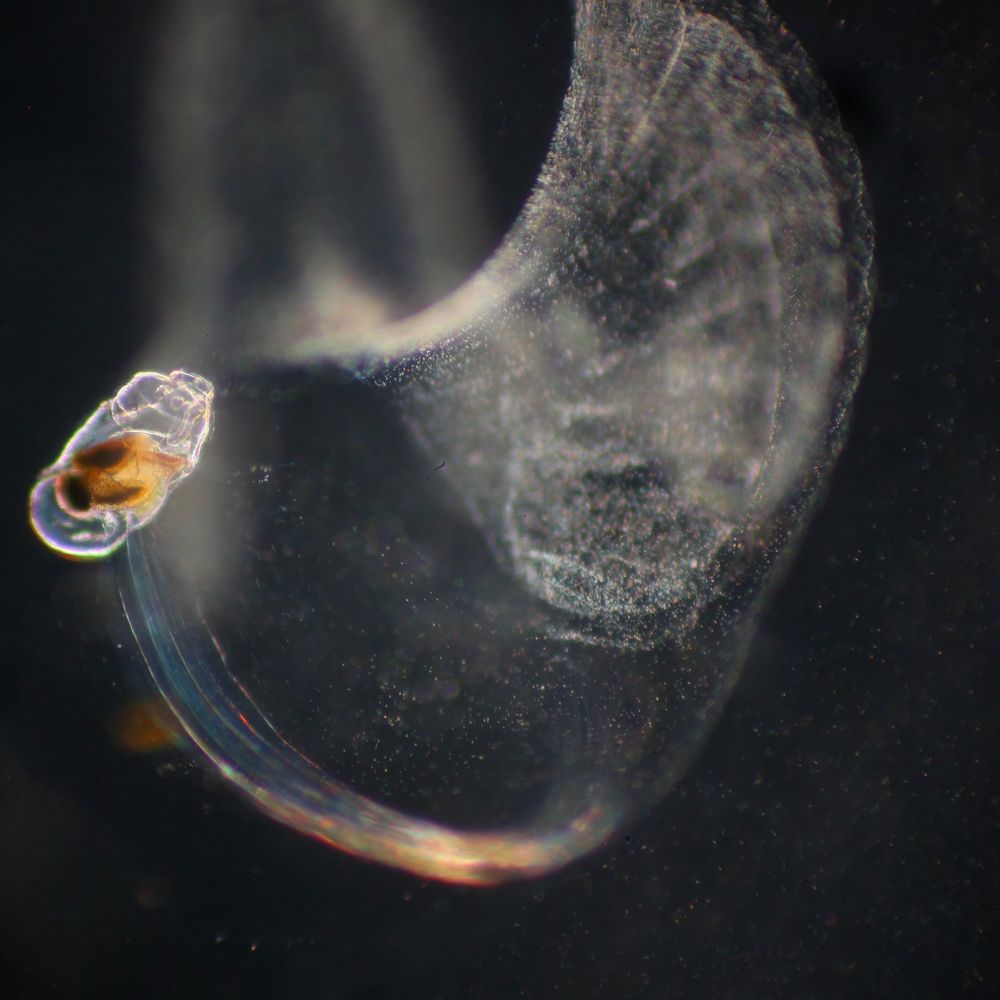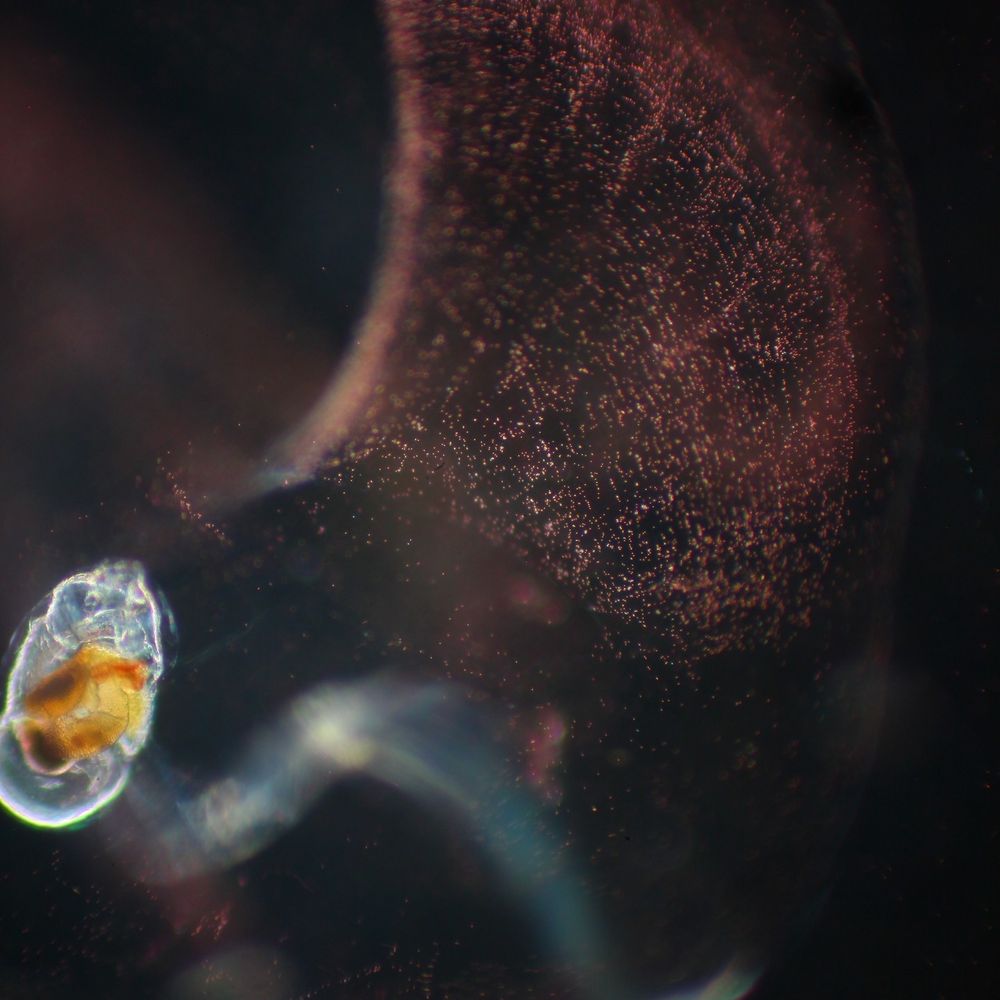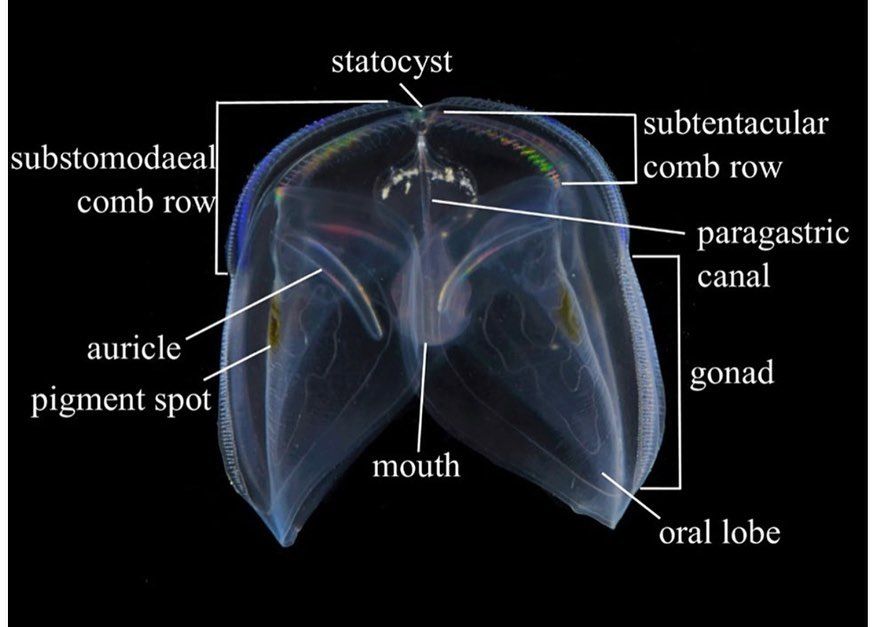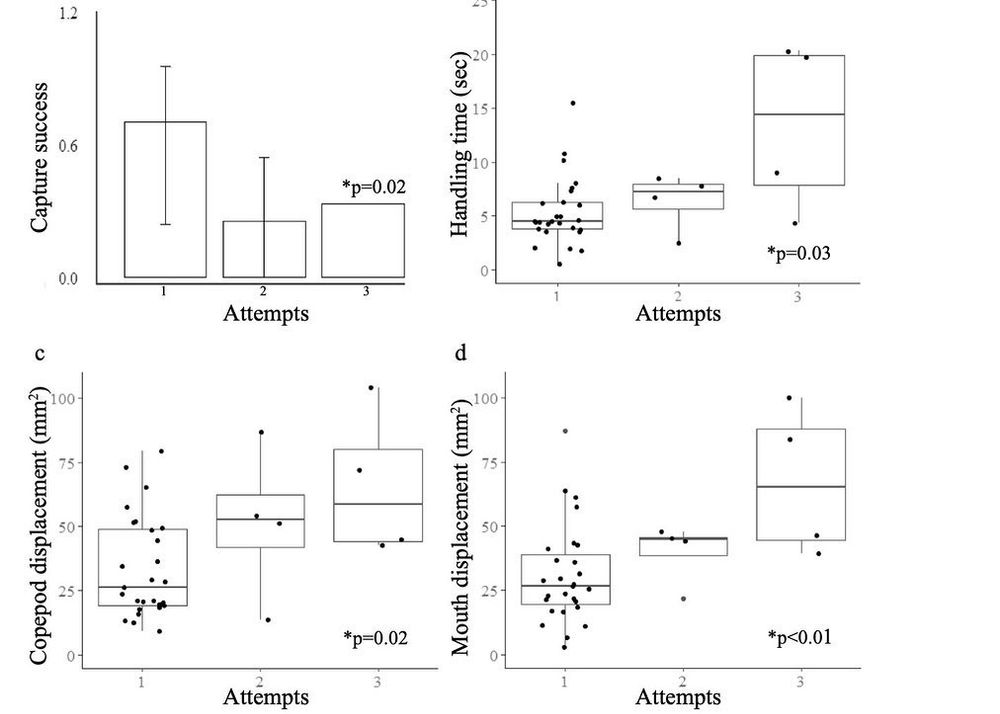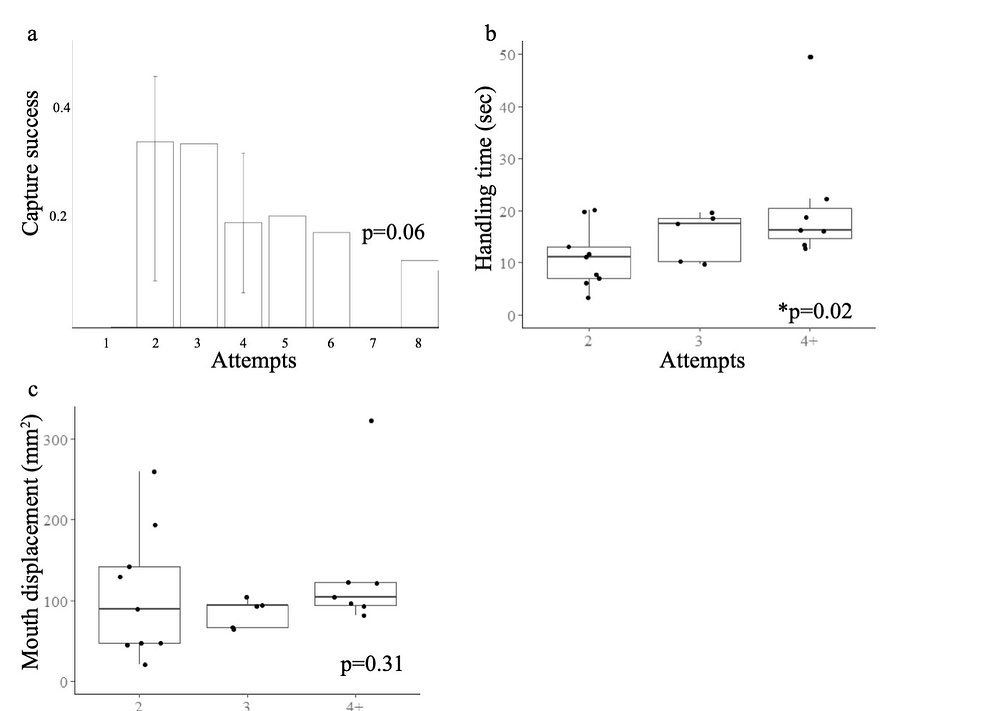Happy #WorldOceansDay from two weird and wonderful marine creatures: a Venus's Girdle #ctenophore and a #squid. Observed while #blackwaterdiving off the coast of Kona, HI, in May 2025.
09.06.2025 02:42 — 👍 6 🔁 1 💬 0 📌 0
Did you know jellyfish are some of the ocean's oldest hunters?
These videos show Liriope tetraphylla - a globally distributed hydrozoan jellyfish - capturing a copepod (Acartia tonsa). These small predators have perfected their hunting strategy over millions of years.
04.06.2025 21:00 — 👍 7 🔁 3 💬 1 📌 0
This little spaceship is a baby sand dollar.
It catches particles of food using cilia (tiny hairs). By feeding fluorescent food particles, we're studying which particles it can and cannot catch, which could have implications for the microbes and phytoplankton in the ocean.
04.06.2025 20:56 — 👍 33 🔁 11 💬 0 📌 0
In linear chains, individuals are lined up one behind the other so that the frontal area of the colony stays the same no matter how many individuals there are. This means that larger colonies get more propulsion without increasing their drag. This makes linear colonies the fastest salp shape!
04.06.2025 20:55 — 👍 1 🔁 1 💬 1 📌 0
In the transversal chain colony shape, individuals are lined up side-by-side so the frontal area increases with more individuals (moving like a chain of people holding hands and walking forward.) The large frontal area makes transversal salp colonies fairly slow swimmers.
04.06.2025 20:55 — 👍 1 🔁 1 💬 1 📌 0
Similar to whorls, cluster colonies also have individuals perpendicular to the colony overall and get “wider” with more individuals. But in clusters, the individuals are held apart from each other by long peduncles. Despite some similarities with whorls, this shape is a surprisingly fast swimmer.
04.06.2025 20:55 — 👍 0 🔁 0 💬 1 📌 0
In whorl shaped colonies, the individuals are oriented perpendicular to the colony overall, and colonies with more individuals have a larger frontal area (they are “wider”). This shape has the slowest swimming speed, though the speed increases with a larger number of individuals propelling it along.
04.06.2025 20:55 — 👍 0 🔁 0 💬 1 📌 0
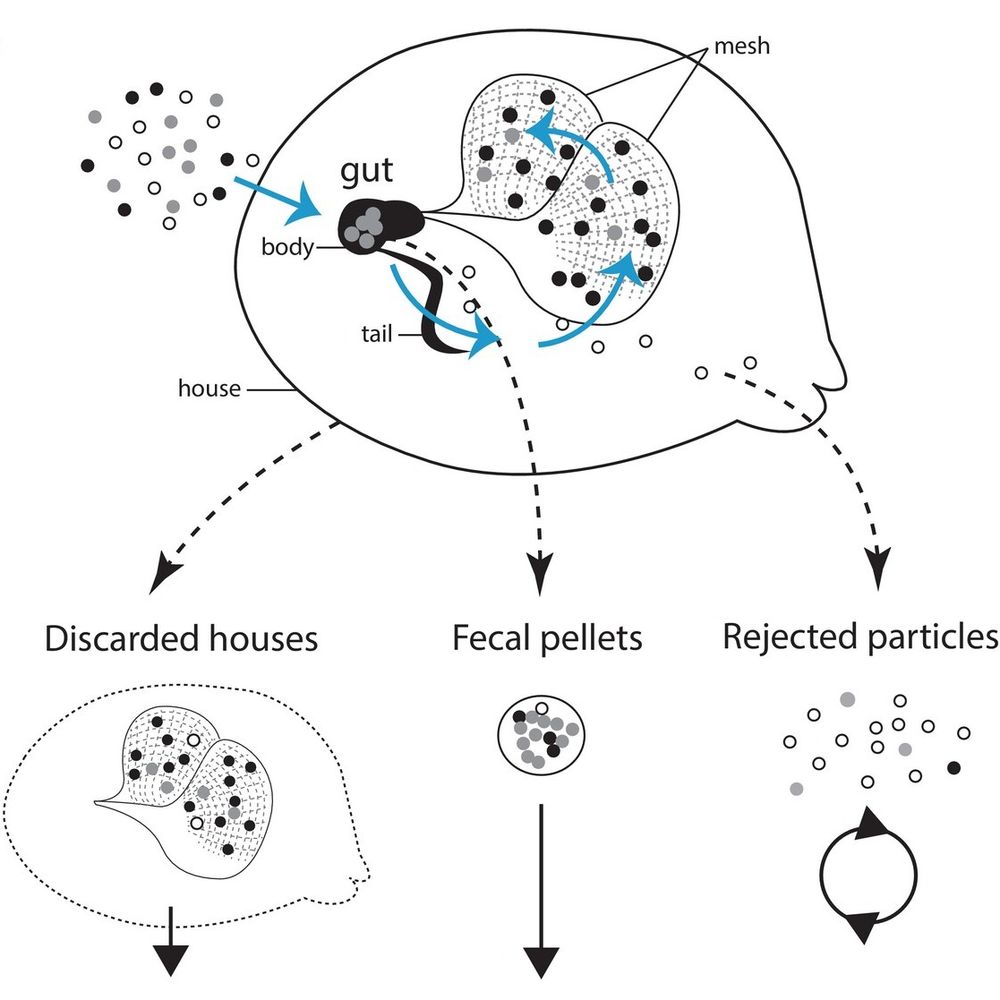
a diagram showing the possible fates of particles caught in the appendicularian's house
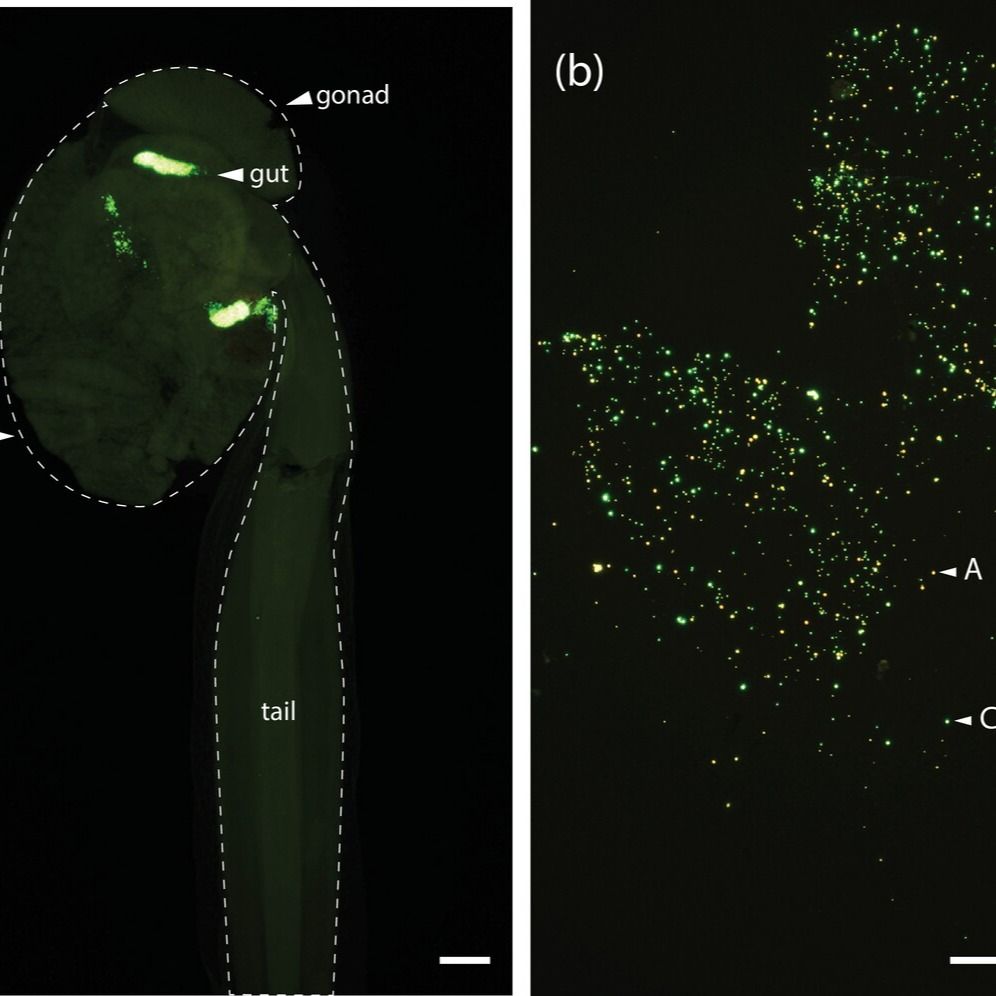
a microscope image of an appendicularian body and house on a black background with glowing green artificial food particles
Appendicularians are small tadpole-shaped marine animals that catch food particles in their mucus mesh “house”. The charge of particles’ surfaces affects whether they are ingested into the appendicularian’s gut or retained in the house - read more here: doi.org/10.1002/lno.... (Feb 2025)
04.06.2025 20:44 — 👍 0 🔁 0 💬 0 📌 0
Sure, extending its tentacles will expose this hydroid to the many dangers of life.
But it will also open it up to life's many joys and opportunities, such as food drifting by!
Many jellyfish in the class Hydrozoa have a "hydroid" life stage in addition to the jellyfish "medusa" stage. (Feb 2025)
04.06.2025 20:40 — 👍 3 🔁 1 💬 0 📌 0
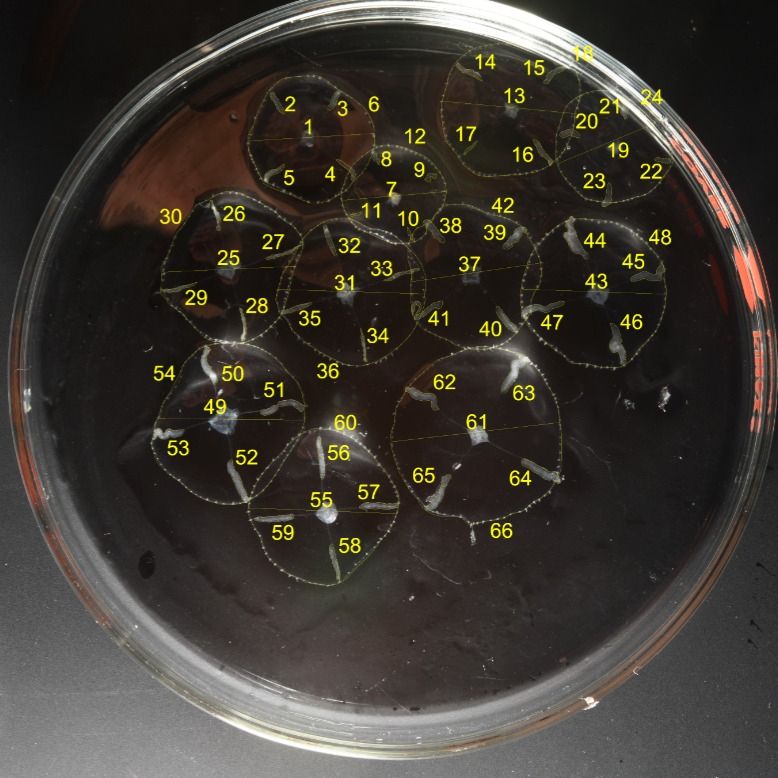
small transparent jellyfish with white gonads individually numbered in a petri dish on a black background
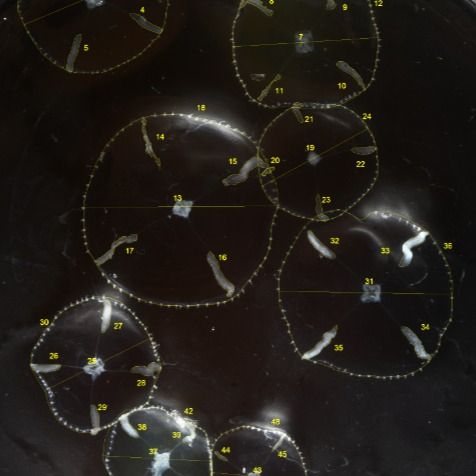
small transparent jellyfish with white gonads individually numbered in a petri dish on a black background
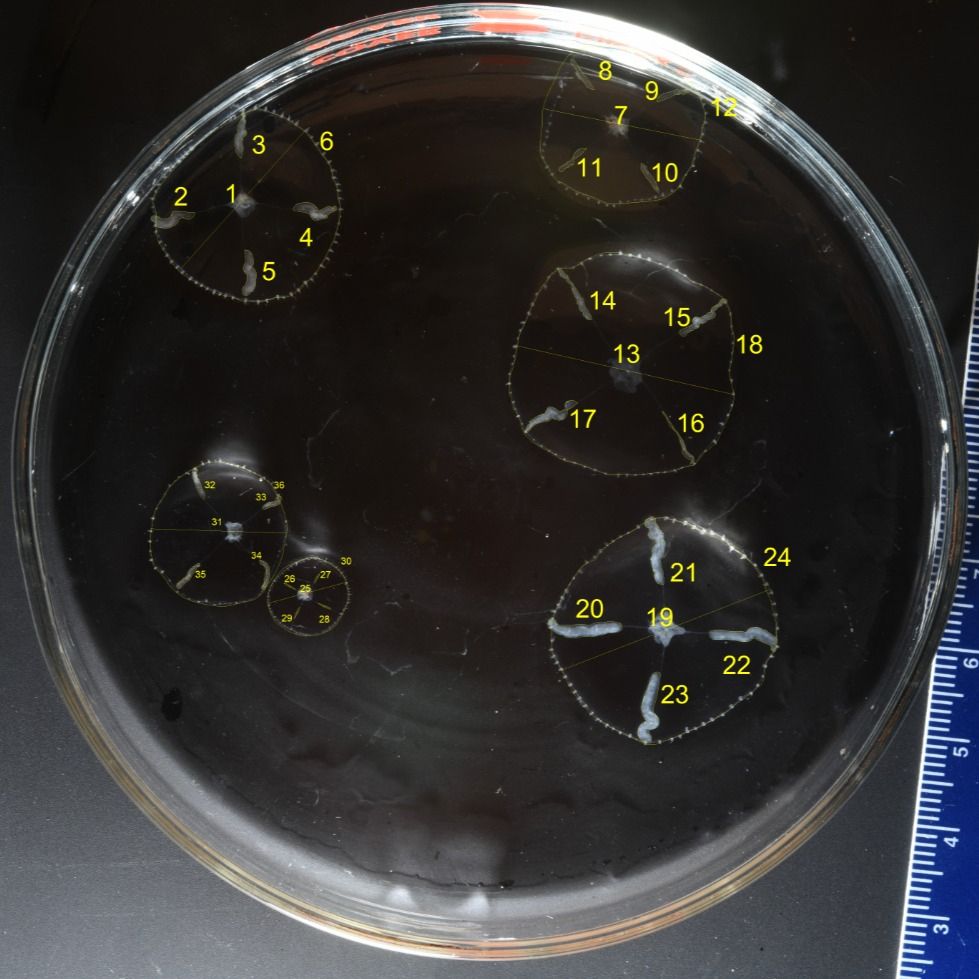
small transparent jellyfish with white gonads individually numbered in a petri dish on a black background
600+ jellies and 2000+ gonads later...
Over the past year, undergrad researcher Will Bird has been measuring body size and gonad size (the four white squiggles) in hundreds of photographs of the small but abundant hydromedusa Clytia gregaria. (Jan 2025)
04.06.2025 20:37 — 👍 2 🔁 1 💬 0 📌 0
Close-up on an Aequorea victoria hydromedusa, collected as it swam by the Oregon Institute of Marine Biology (November 2024)
04.06.2025 20:34 — 👍 3 🔁 1 💬 0 📌 1
Often, to study gelatinous zooplankton we venture out to the ocean to meet them where they live. But for a closer look, sometimes we bring them into the lab. In summer 2024, PhD candidate Farzana Yesmin investigated the growth of the hydromedusa Clytia gregaria by photographing them as they grew.
04.06.2025 20:32 — 👍 3 🔁 1 💬 0 📌 0
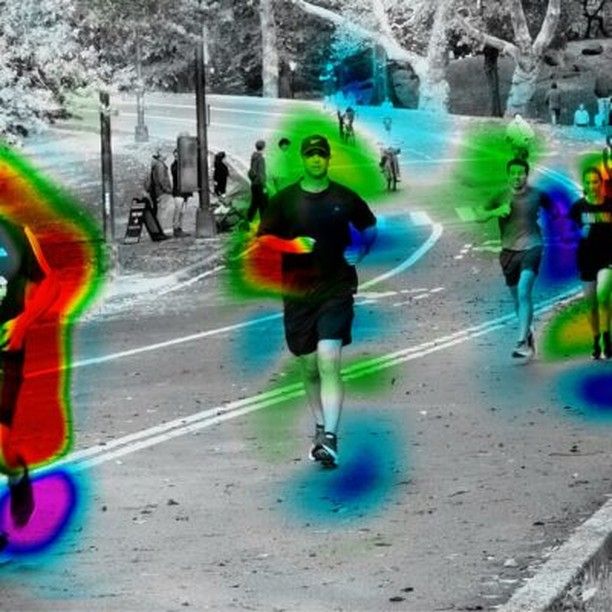
A black and white photo of people running on a road. The people have colorful areas around them indicating their motion
In·flu·ence, a short film co-directed by Kelly Sutherland and Evan Luchkow, screened at the Planet in Focus film festival in Toronto in October 2024!
The film repurposed fluid dynamics tools to examine the interactions between humans and the world around us.
04.06.2025 20:29 — 👍 1 🔁 0 💬 0 📌 0
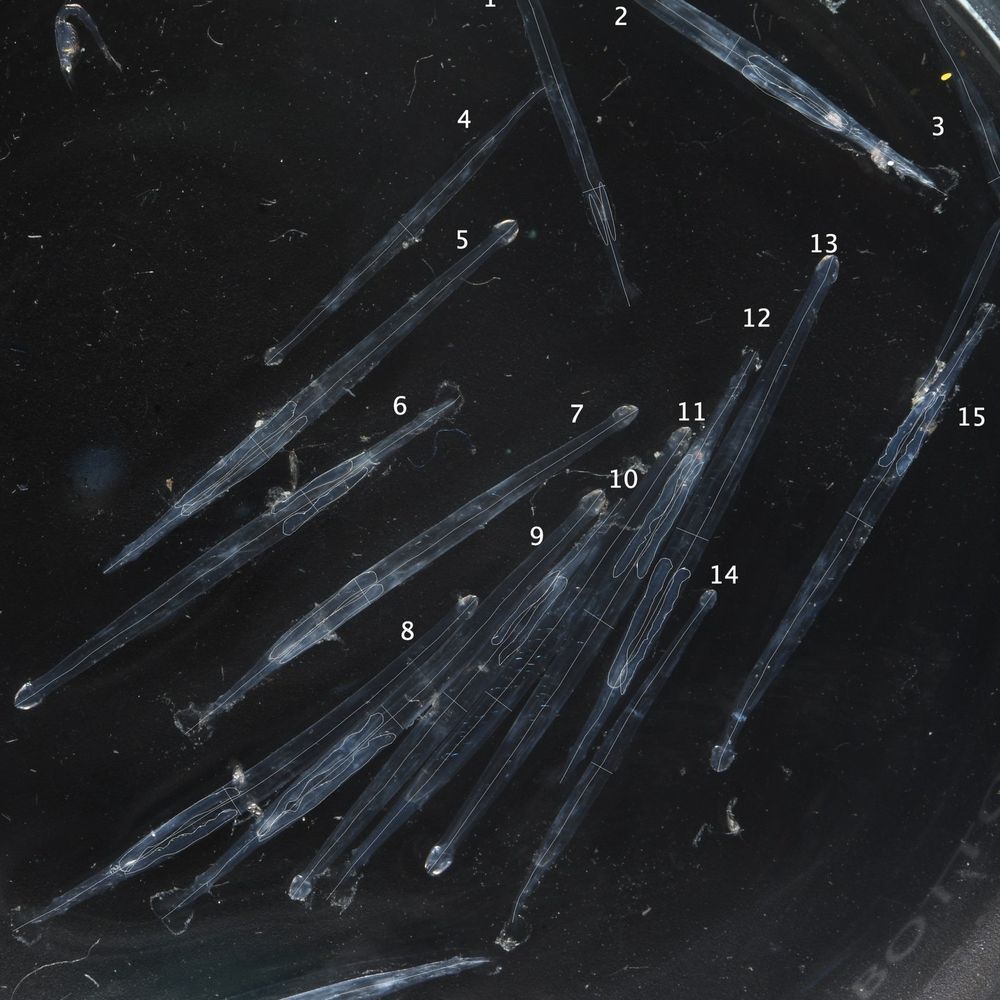
Many translucent chaetognath worms individually numbered against a black background
During spring term 2024, undergrad researchers Audrey Lillie, Will Bird, and Ezra Bergson-Michelson studied the physiology of chaetognaths (pictured), hydromedusae, and salps by measuring anatomy of individual organisms in photos.
04.06.2025 20:26 — 👍 2 🔁 1 💬 0 📌 0
The chain-forming salp, Iasis cylindrica, swims in helices! Using blue-water SCUBA diving and 3D videography we described the mechanics of this movement which is rarely studied in organisms larger than 1cm. Read more here: doi.org/10.1126/scia... (May 2024)
Funded by @moorefound.bsky.social
04.06.2025 20:24 — 👍 6 🔁 4 💬 0 📌 1
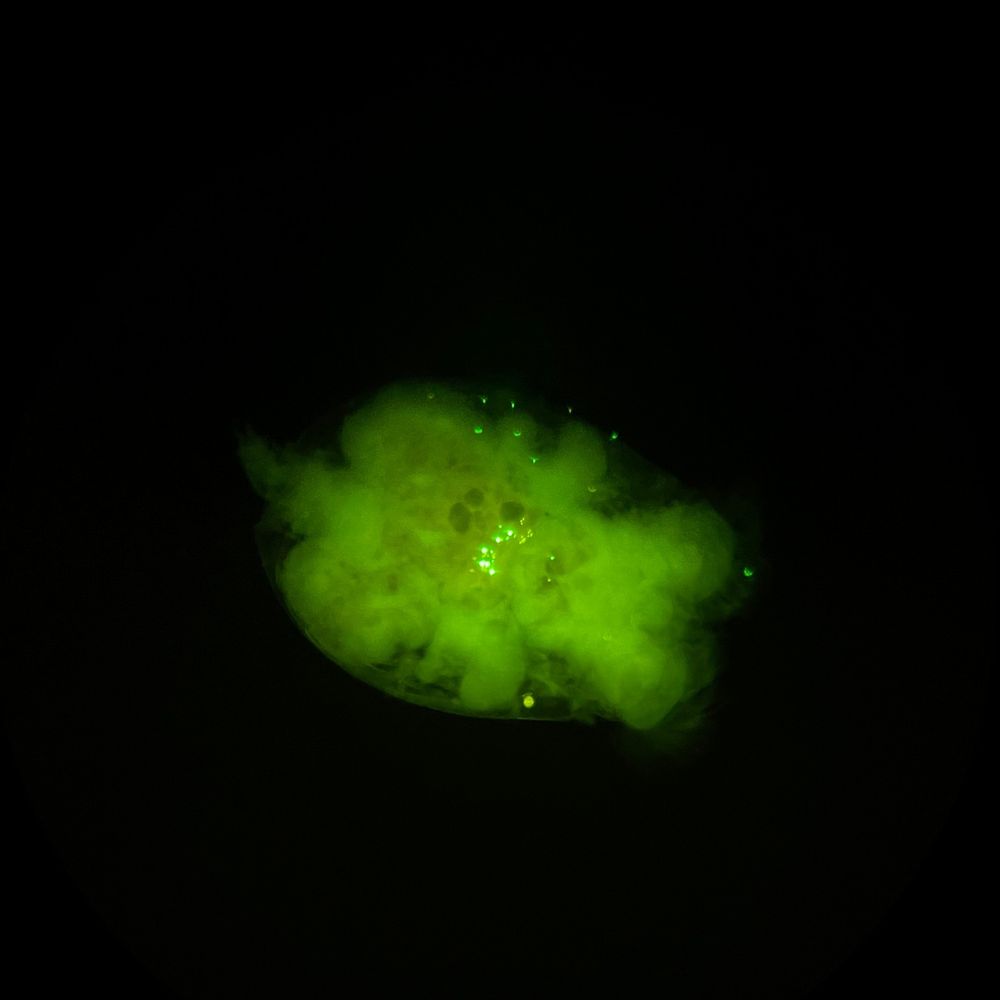
a round glowing green rotifer with bright green dots in it on a black background
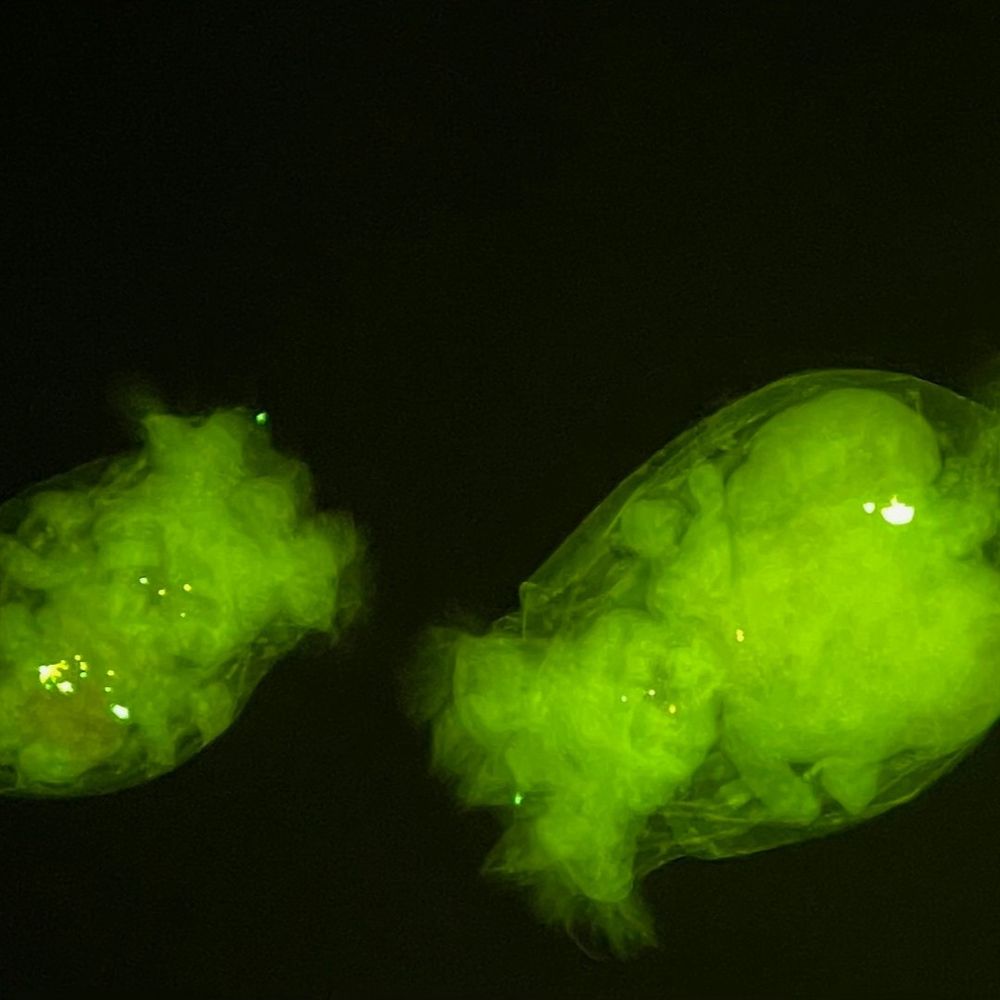
two roundish glowing green rotifers with bright green dots in them on a black background
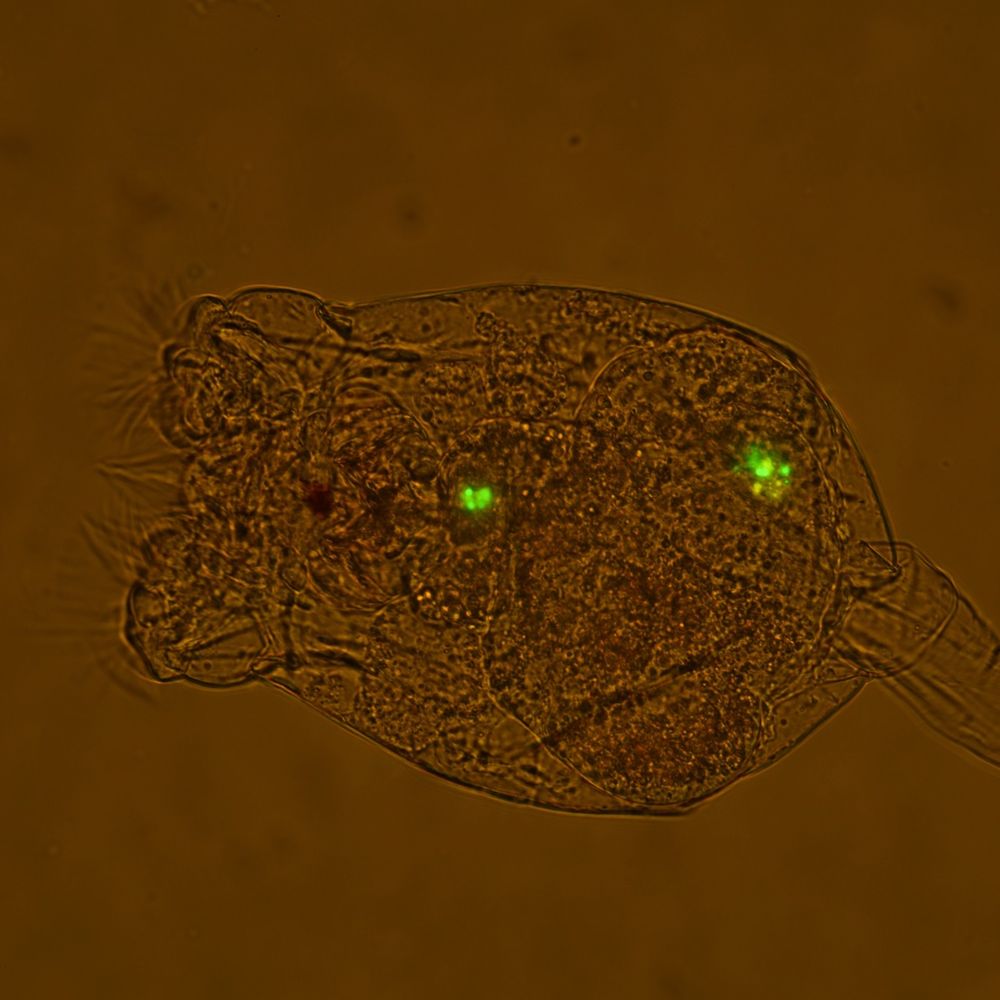
a rotifer with green glowing dots in it on a brown background
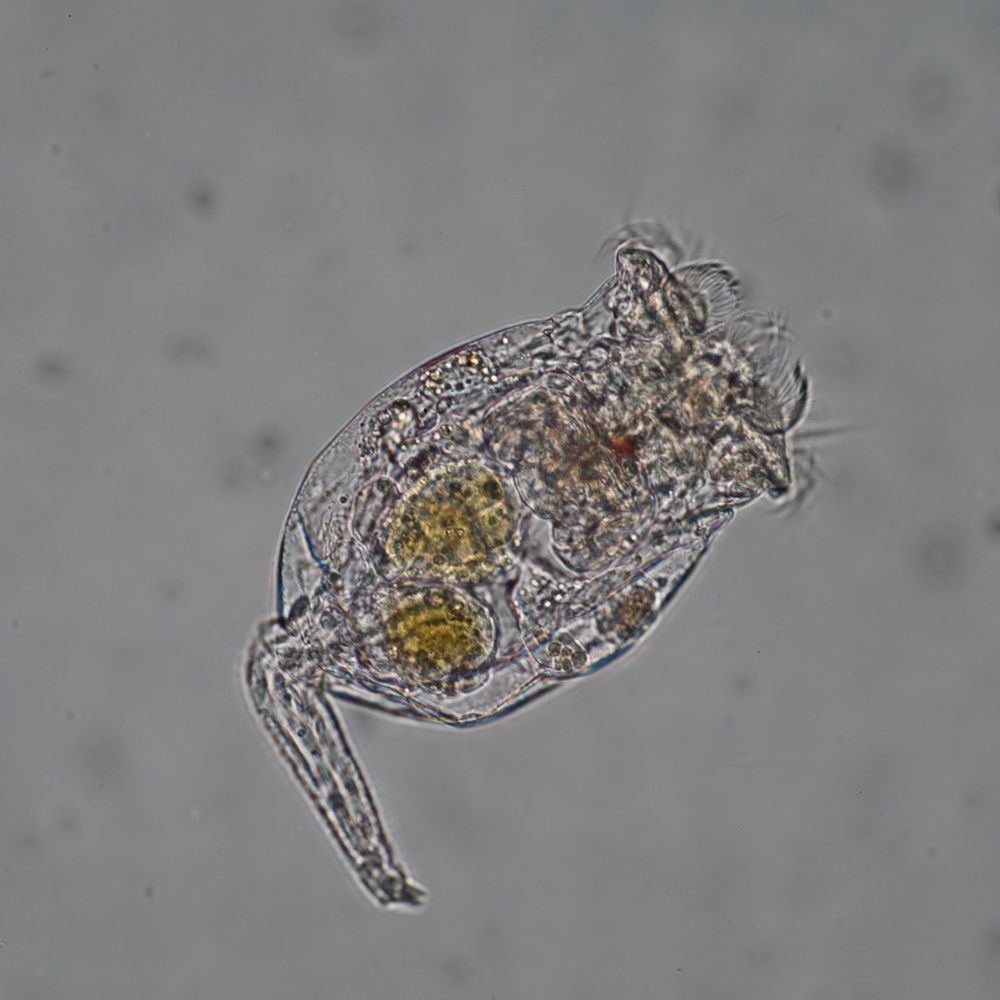
a translucent rotifer on a gray background
Undergrad researcher Hannah Rosenfeld investigated feeding selectivity among animals that employ various suspension-feeding mechanisms to collect particles from the water. (Rotifers use cilia to make a vortex which draws food particles toward their mouth.) (March 2024)
04.06.2025 20:19 — 👍 0 🔁 0 💬 0 📌 0
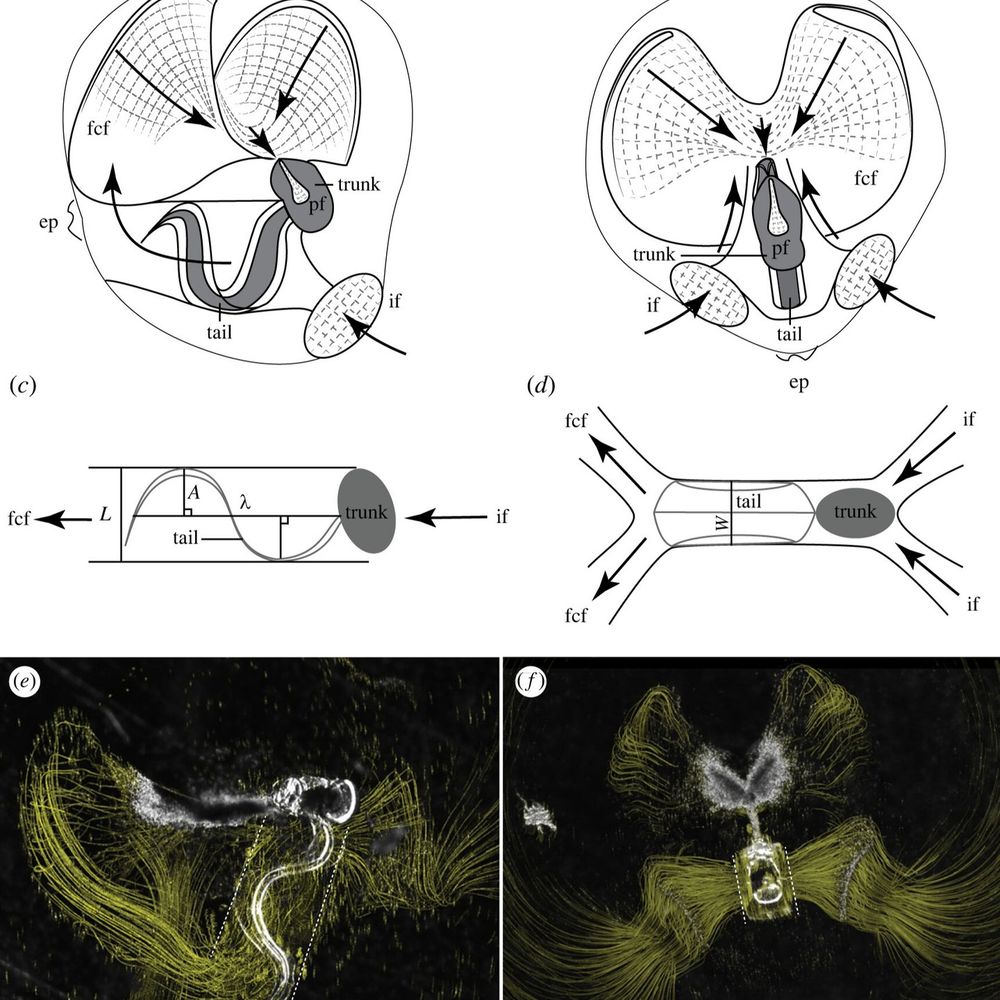
Peristaltic pumps are common in industrial and even in everyday settings. A cosmopolitan marine organism (the appendicularian, Oikopleura dioica), uses a novel peristaltic pump based on a tail that undulates inside a tightly fitting chamber. Nov. 2023 paper: doi.org/10.1098/rsif...
04.06.2025 20:14 — 👍 0 🔁 0 💬 0 📌 0
This #ctenophore Lampea lactea is specialized in eating salps. This adult individual is attempting to ingest a solitary Cyclosalpa sewelli salp off the coast of Hawaii. Video by Brad Gemmell. (July 2023)
04.06.2025 20:07 — 👍 1 🔁 1 💬 0 📌 0
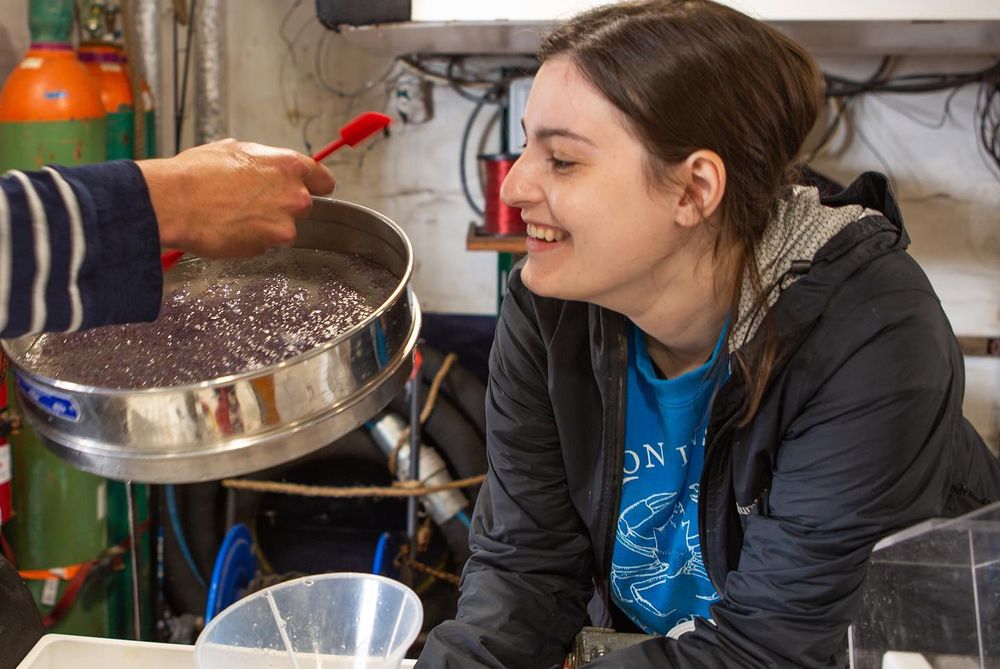
A scientist smiles while looking into a tray of brownish smushed zooplankton
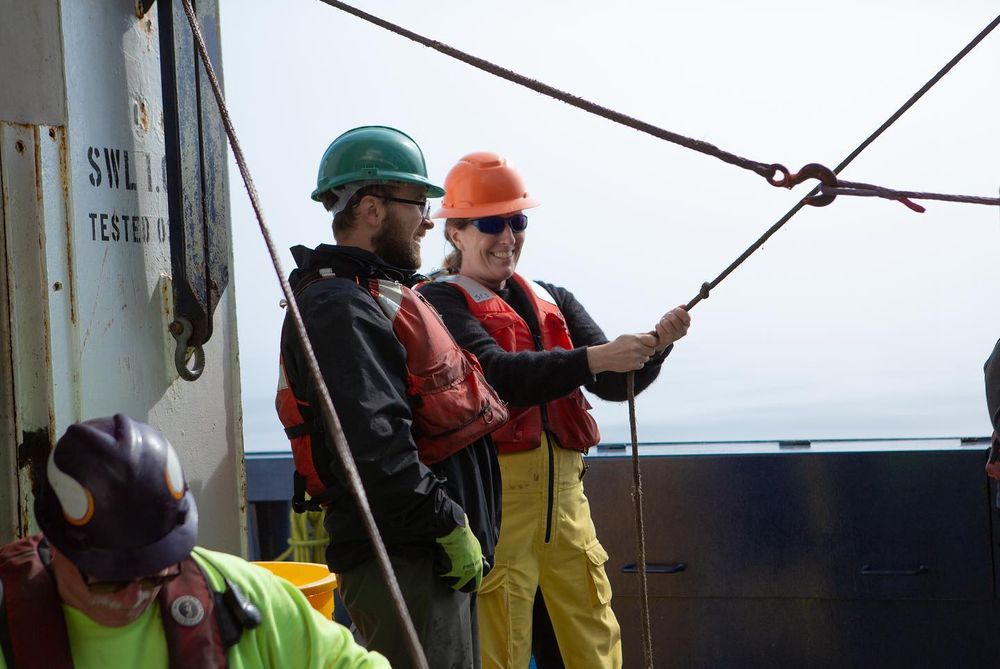
two scientists wearing hardhats smile while one holds on to a cable

a scientist smiles while holding up a large transparent salp
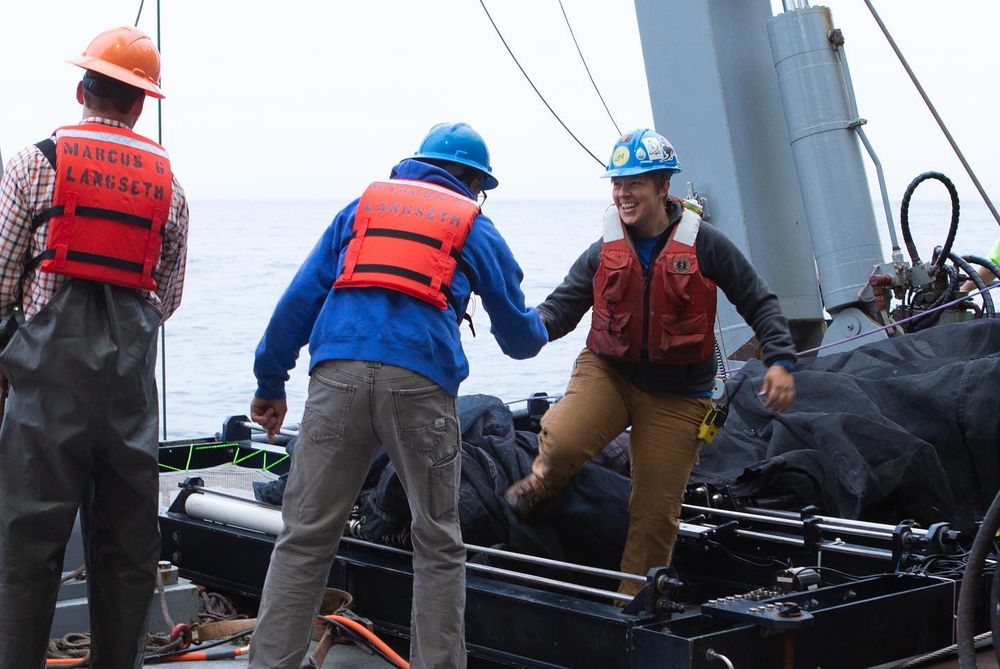
a scientists smiles while stepping over a large net with the help of another scientist
While working and living at sea for weeks at a time can be tough, there is always time for smiles, laughter, and learning. Photos of smiling scientists at sea by #scicomm intern Carmen Sanchez-Reddick (March 2023)
04.06.2025 20:05 — 👍 1 🔁 0 💬 0 📌 0
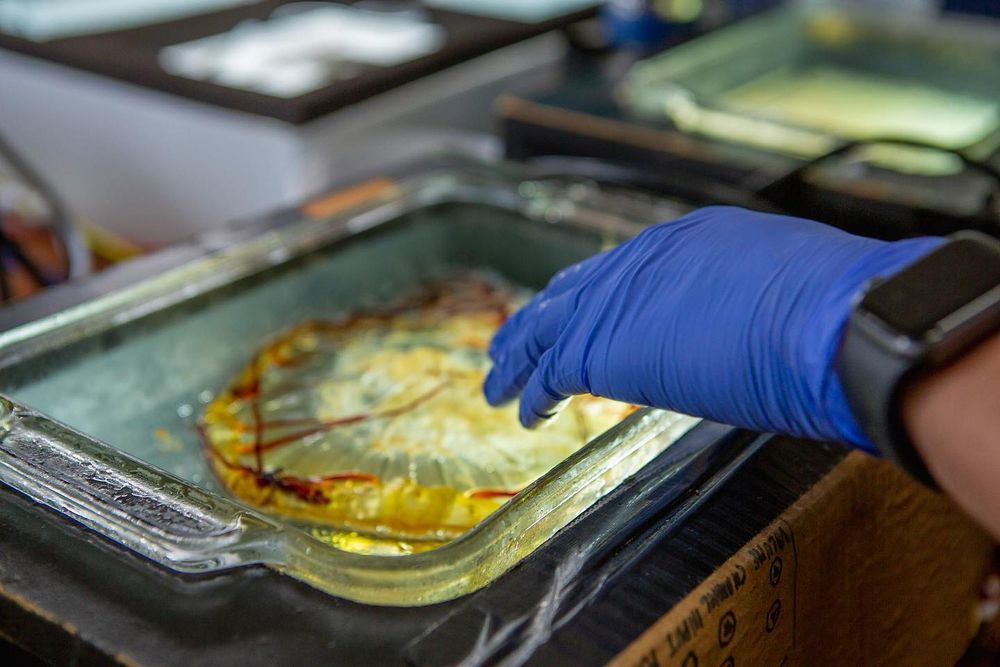
a large orange jellyfish flattened in a glass tray
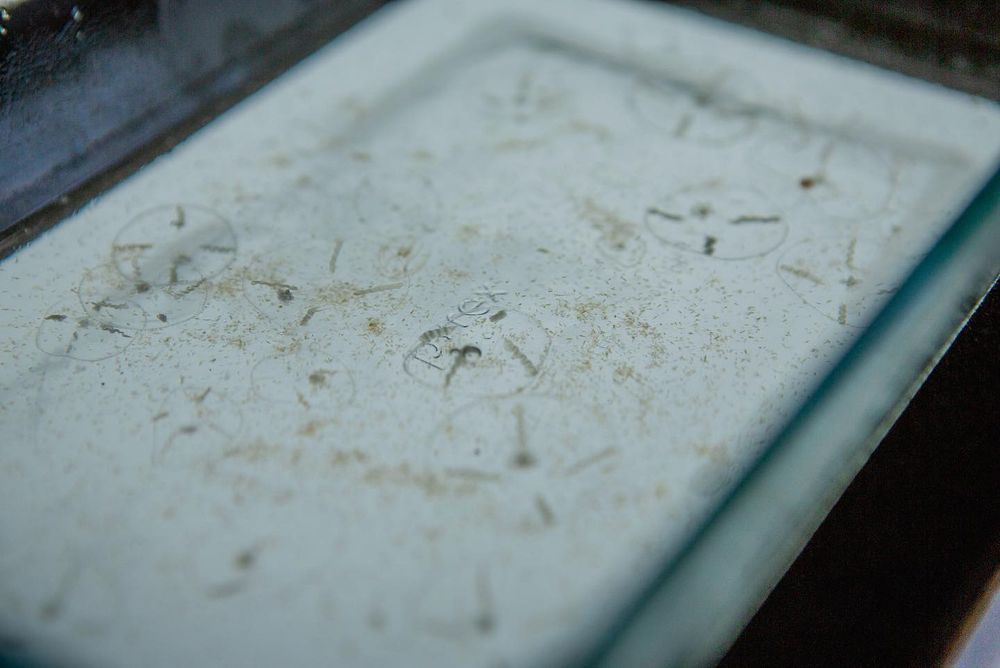
many small transparent jellyfish in a glass tray
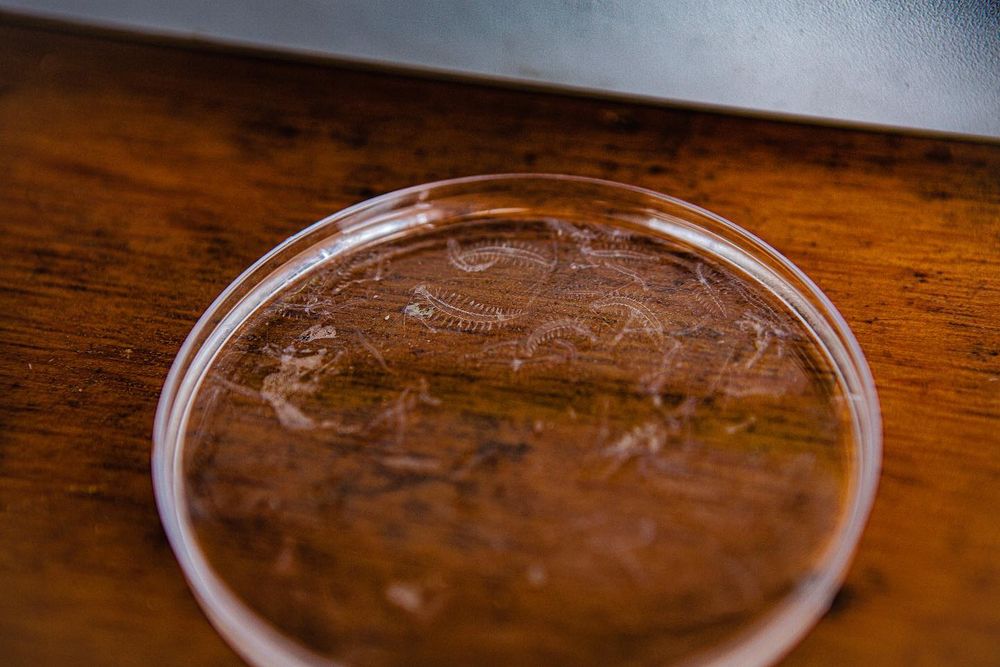
small transparent many-legged centipede-like animals in a petri dish
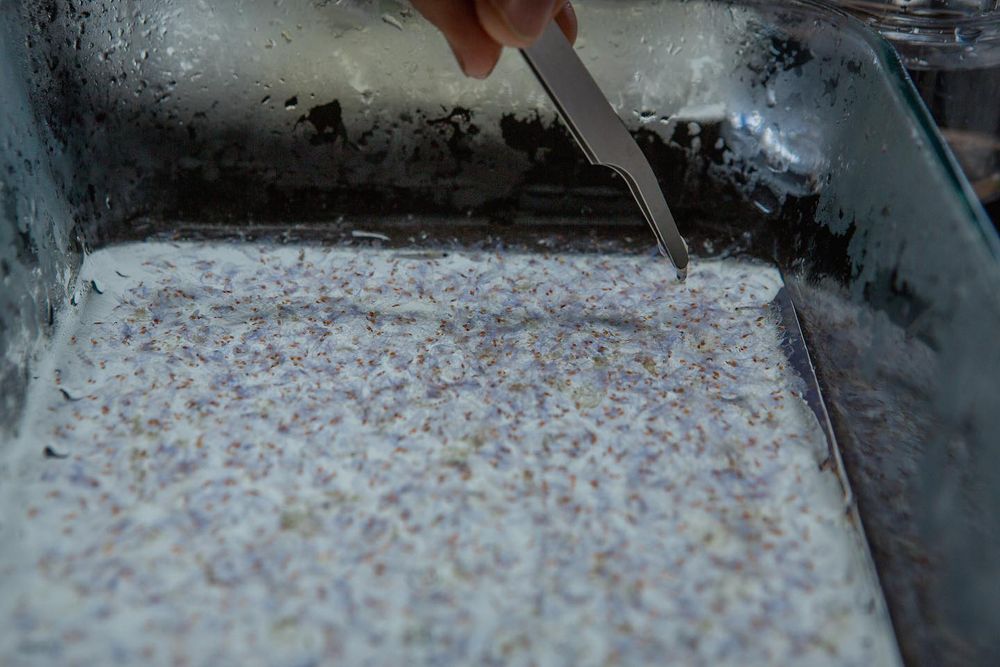
many purplish round animals in a glass tray
Some of the gelatinous #zooplankton we collected off the Oregon coast: a large Pacific sea nettle jellyfish , small hydromedusa jellyfish Clytia and Eutonina, Tomopteris polychaete worms, and thousands of doliolids. Photos by #scicomm intern Carmen Sanchez-Reddick (Feb 2023)
04.06.2025 19:56 — 👍 1 🔁 0 💬 0 📌 0
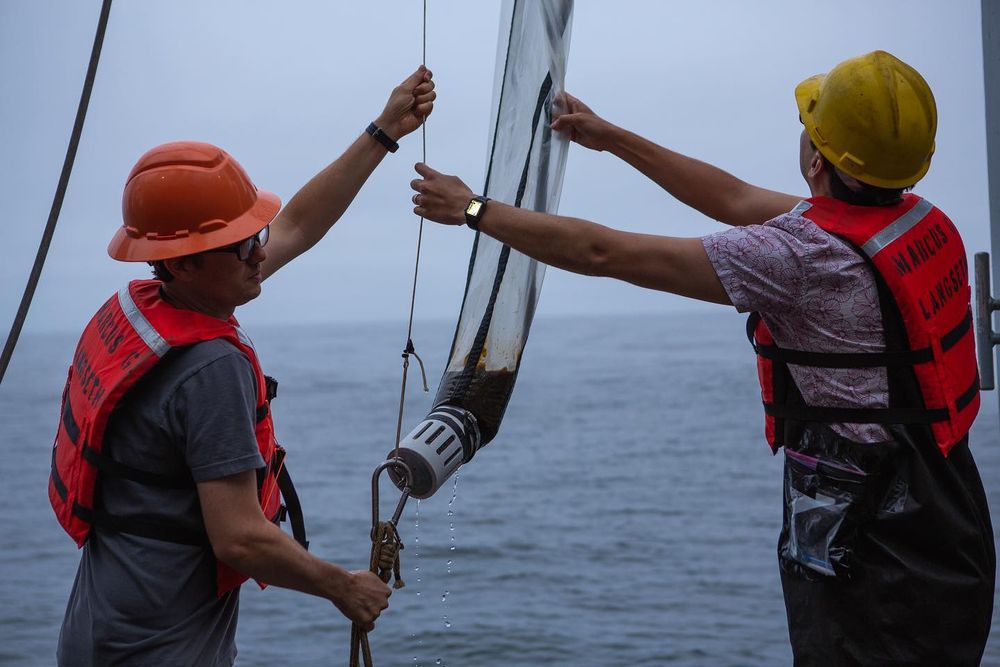
two scientists with life jackets and hard hats stand at the side of a boat holding a cone shaped net between them
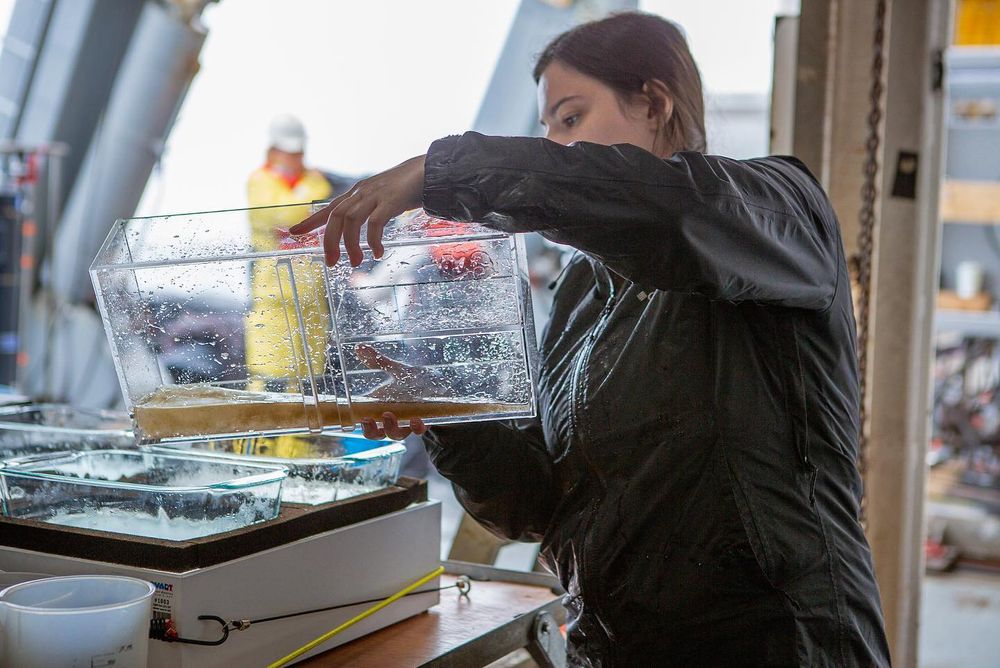
a scientist in a black jacket pours a transparent box of brown water containing zooplankton into a tray
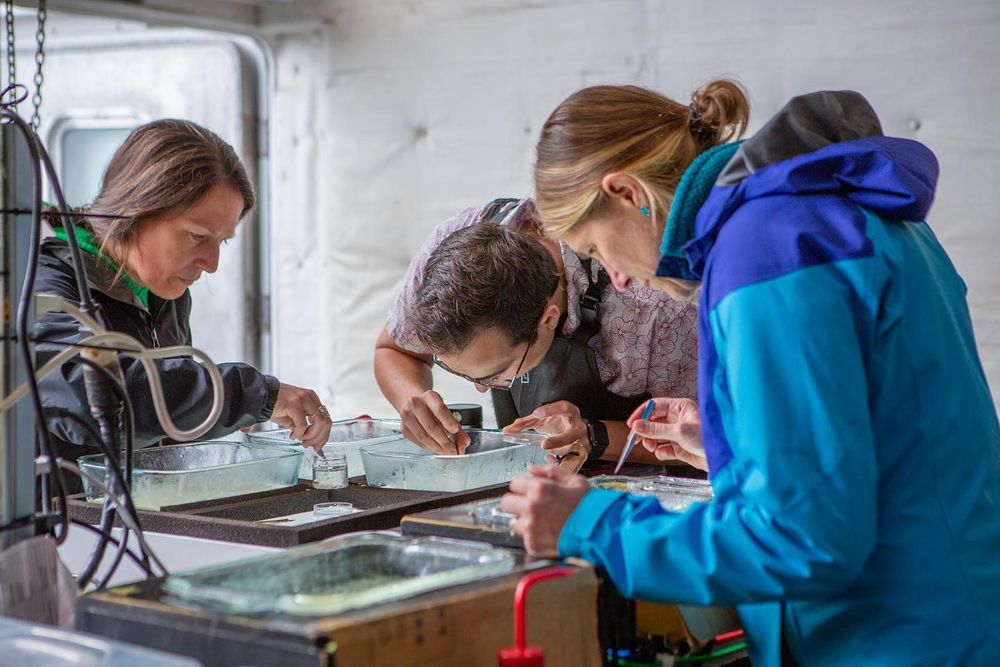
three scientists peer into trays and pick things out with forceps
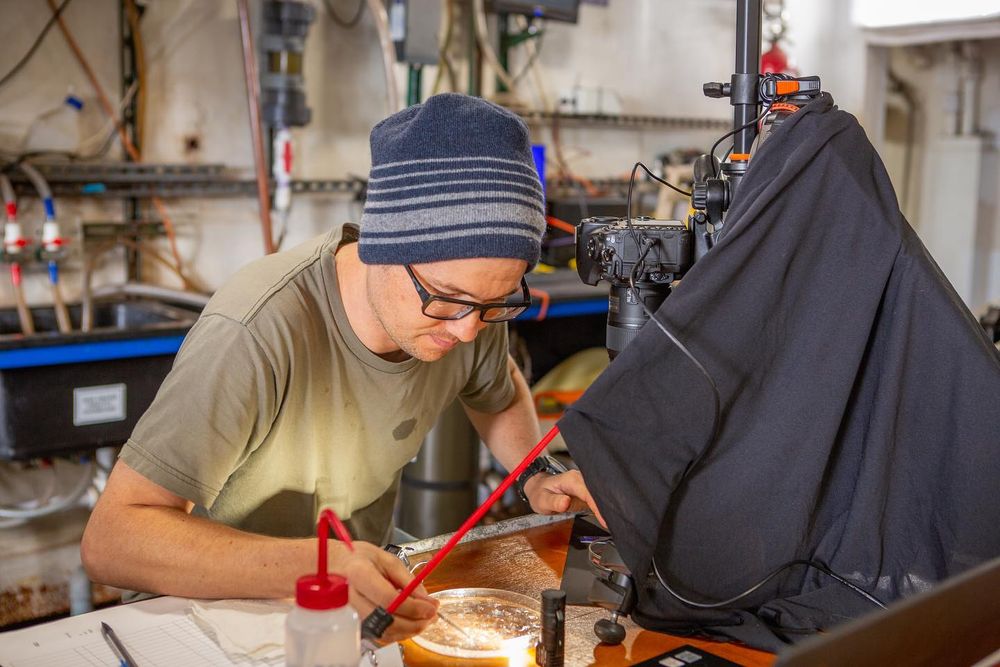
a scientists examines a petri plate of zooplankton under a camera
Working with #zooplankton aboard the Feb. 2023 research cruise: catching zooplankton in a net, sorting zooplankton in trays by hand, and finally photographing individual organisms for measurements later on. Photos by #scicomm intern Carmen Sanchez-Reddick
04.06.2025 19:50 — 👍 0 🔁 0 💬 0 📌 0
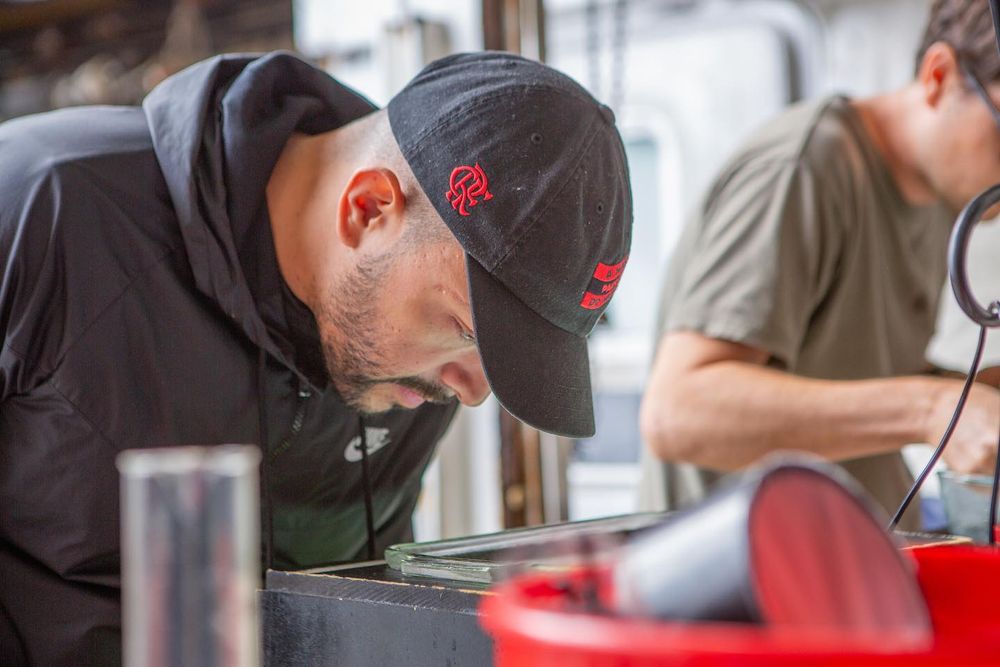
A scientist in a jacket and baseball cap peers into a tray of zooplankton
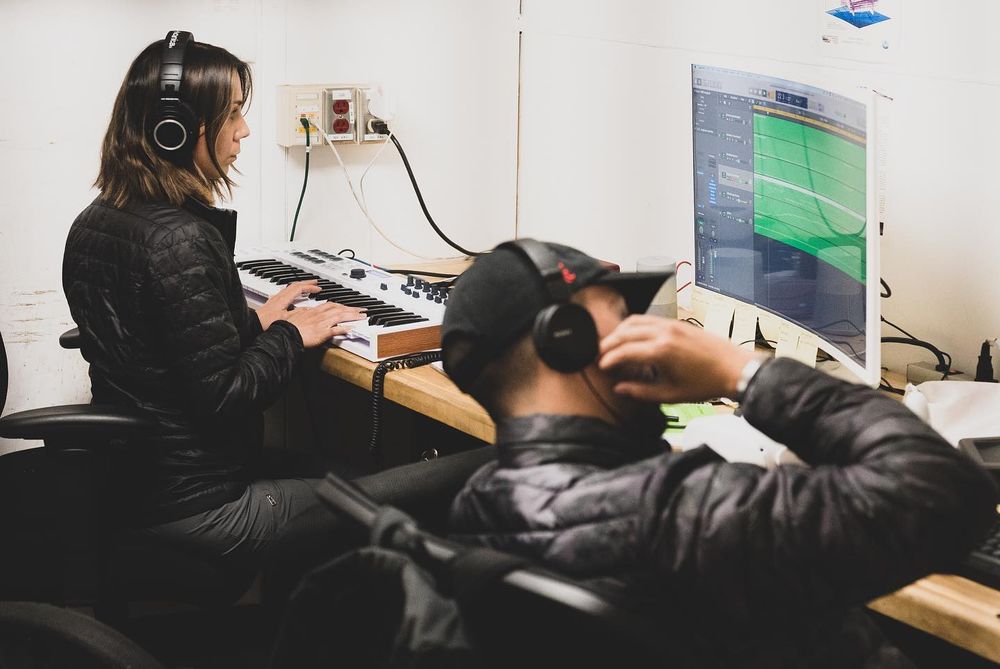
Two musicians wearing black jackets and headphones sit in front of a computer
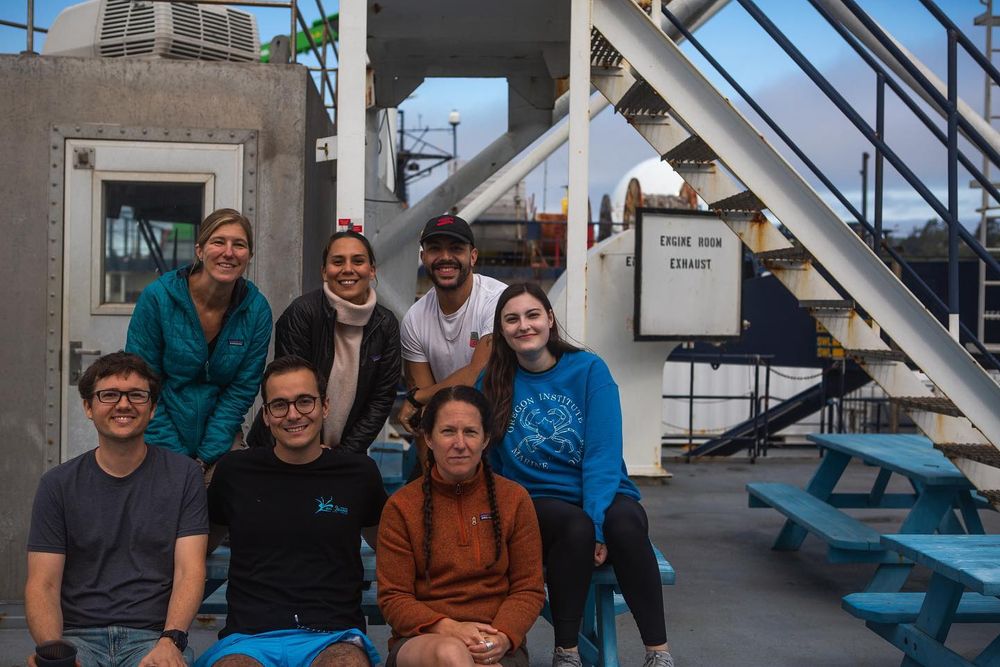
Scientists and artists smile for the camera outside aboard the research cruise
UO Professor Danny Pimentel and musician Sirintip Phasuk joined us on the research cruise. Danny was developing #AR and #VR experiences to bring ocean research to new audiences, and
#artistatsea Sirintip created music based on #zooplankton and ocean data.
04.06.2025 19:45 — 👍 0 🔁 1 💬 0 📌 0
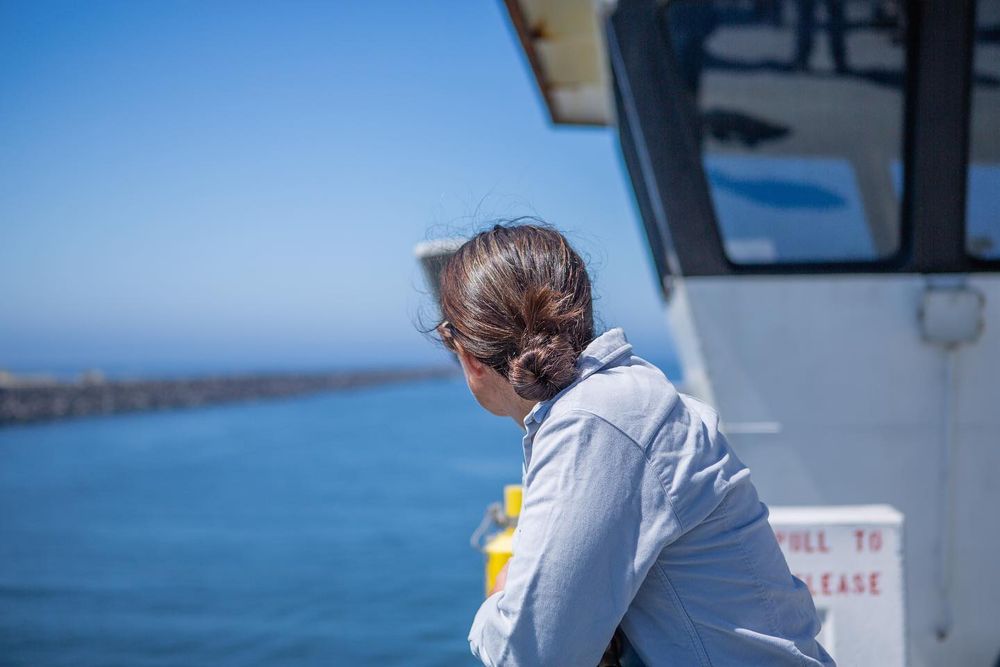
A scientist looks out to sea over the side of a boat in anticipation of the expedition ahead
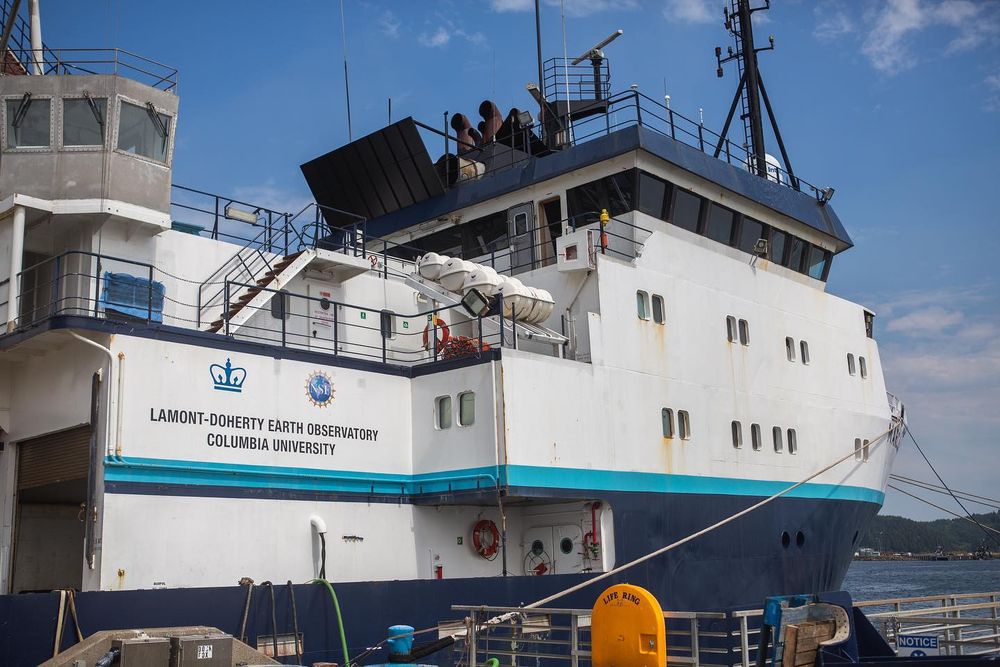
The side of the white and blue research vessel R/V Langseth

Many scientists smile for the camera aboard R/V Langseth
In July 2023, the Sutherland Lab set out on R/V Langseth with @osuplanktonlab.bsky.social and @bluewaterlab.bsky.social to sample along the Oregon coast for gelatinous #zooplankton. To learn more, check out #scicomm intern Carmen Sanchez-Reddick's story and photos: www.sutherlandlab.org/spectra
04.06.2025 19:45 — 👍 0 🔁 1 💬 1 📌 0
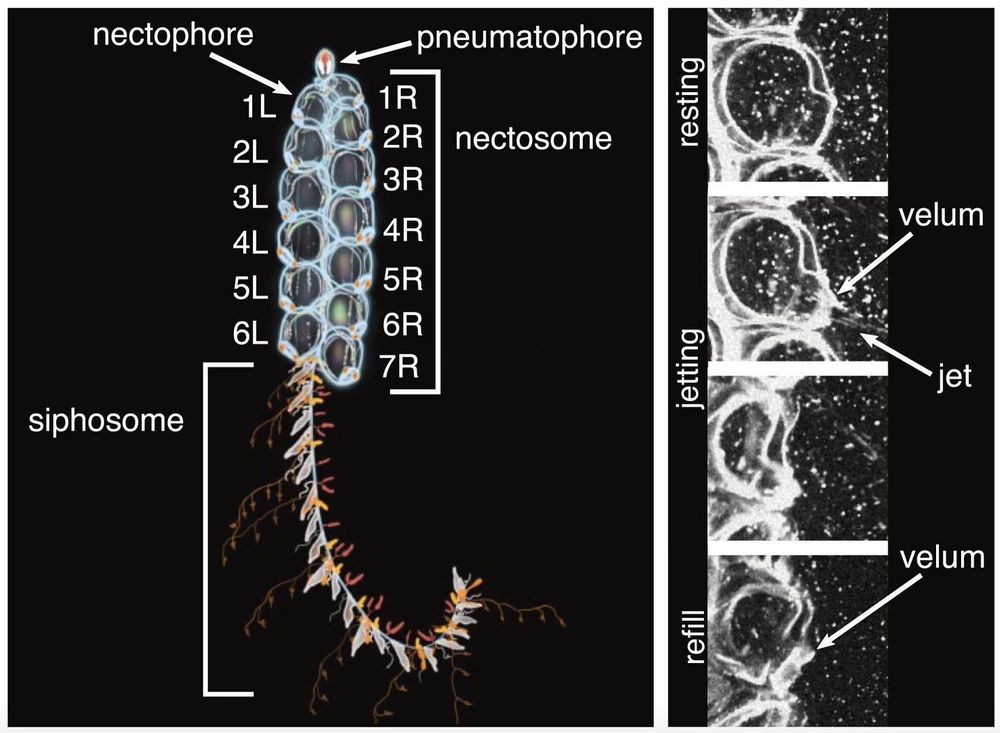
A siphonophore which looks like white transparent bubbles in two rows with a long frilly tail trailing out one end
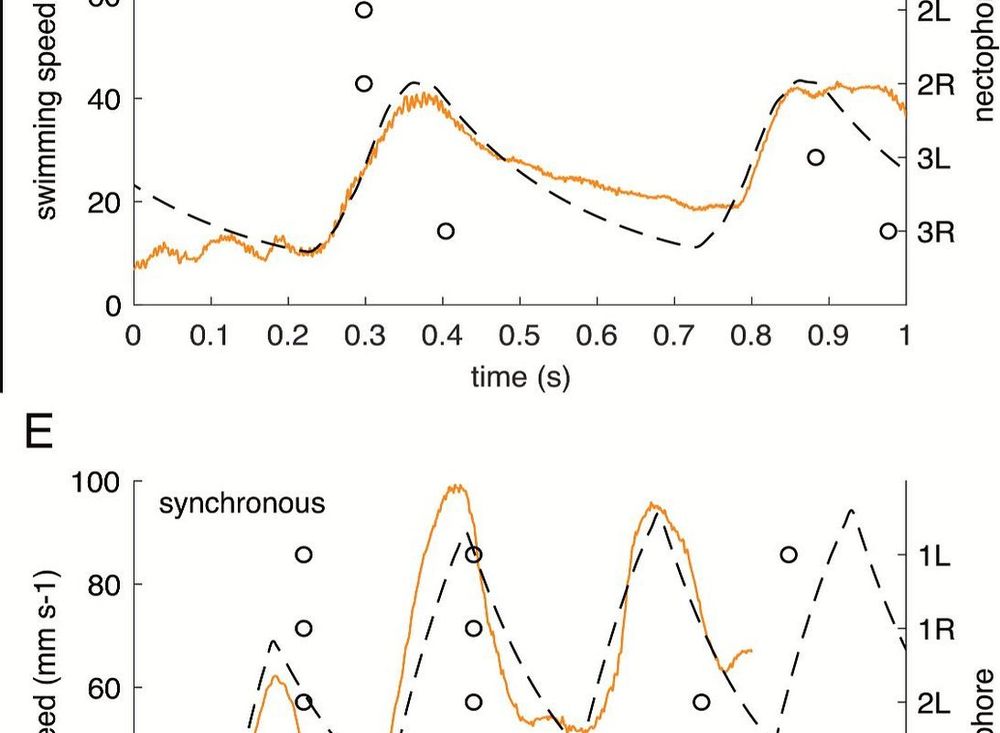
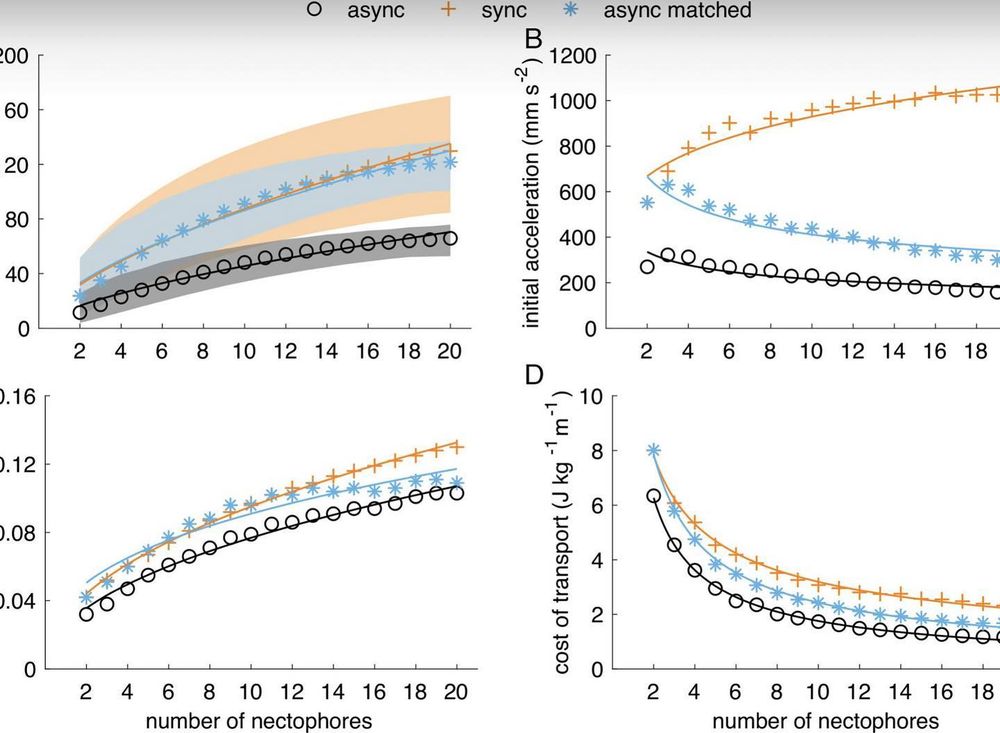
Physonect #siphonophores like Nanomia bijuga produce multiple jets for propulsion, employing distinct swimming behaviors such as pulsating in sequence and simultaneous pulsation. In this paper, we used experiments and modeling to compare swimming modes. (Jan 2023) doi.org/10.1073/pnas...
04.06.2025 19:31 — 👍 0 🔁 0 💬 0 📌 0
Combining more than 120 years of ocean research with the repeatedly ranked No. 1 U.S. institution in innovation, impact and sustainability.
We foster path-breaking scientific discovery, environmental conservation, and preservation of the special character of the Bay Area.
asst. prof tamu bio | global change bio | marine invertebrates | larval ecology | genomics | diversity in STEM | posts=mine | she/her
PhD Candidate | Biological Oceanography | In situ Imaging | Gelatinous zooplankton | UGA/SKIO (views are my own)
Bringing the Big Blue to you since 1992. linktr.ee/oregoncoastaquarium
MS student in the Bronson Lab at Cal Poly Humboldt. Larval fish taxonomist & aspiring ichthyologist. Huge hagfish enjoyer 🐟
All views my own.
🏳️⚧️ 🏳️🌈
https://sites.google.com/view/larvalfishguy/about
Listening will feel like confiding in your wisest auntie, who just happens to be a badass scientist!
.
Hosted by Dr. Emilia Huerta-Sanchez and Dr. Rori Rohlfs
https://www.sciencewisepodcast.org/
Geneticist at University of Oregon @uoregon. Worms, C. elegans, aging, evolution, genetics, genomics, complex traits. Former provost and interim president. Lab: https://pages.uoregon.edu/pphil/ GScholar: https://scholar.google.com/citations?user=JbH6mVkAAA
Associate Professor at University of Oregon - geneticist studying DNA repair during meiosis. Also musician, mom, and outdoor enthusiast. www.libudalab.org
Associate Professor at the University of Oregon. Microbes, evolution, and infectious disease.
Dad and husband.
barberlab.org
Oregon's science and culture museum. Located on the University of Oregon campus in Eugene, Oregon. State repository for archaeological and paleontological artifacts.
NYT bestselling author of Becoming Earth (Random House, 2024), being translated into 12+ languages ✵ Contributing Writer, New York Times Magazine ✵ Gardener, baker, naturalist ✵ 🇱🇧🇺🇸🏳️🌈 ✵ Surname rhymes with neighbor ✵ https://www.ferrisjabr.com
Marine biologist, writer, policy nerd. Co-founder Urban Ocean Lab, think tank for the future of coastal cities. In love with climate solutions.
marine biologist, boomer not doomer, solutionista, 💗Maine💗
Member Natl. Acad. Sci., Darwin Medal
#EarthOptimism #OceanOptimism #BeyondTheObituaries
Author-Citizens of the Sea https://www.amazon.com/Citizens-Sea-Wondrous-Creatures-Census/dp/1426206437
World Register of Marine Species. An authoritative classification and catalogue of marine names. Hosted by @vliznews.bsky.social. Use #marinespecies
Website: https://marinespecies.org/
Jellyfish venom systems and venomics • Postdoc @ Stowers • PhD from KU EEB • Evolutionary biology, toxinology, functional genomics • Always #Hype4Hydrozoa • She/her
http://annaklompen.com/
🪼🪼🪼
Opinions my own.
Maker | Educator at Mendocino College in Northern California |
Clay & Cats & Ocean
www.sarahloganceramics.com
PhD Candidate at Oregon State University Plankton Ecology Lab
Plankton Ecology + Early Life History of Fish
We're the world's largest independent non-profit dedicated to ocean research, exploration, and education. Join us!
Understanding and protecting the planet since 1903.
📍UC San Diego


